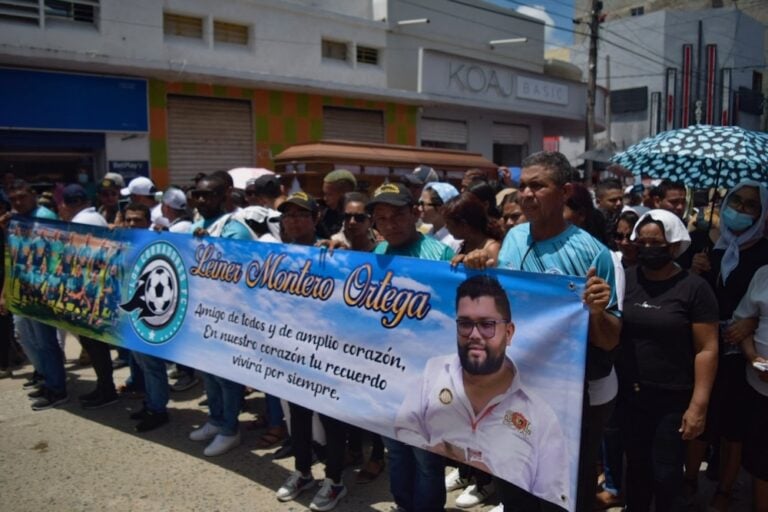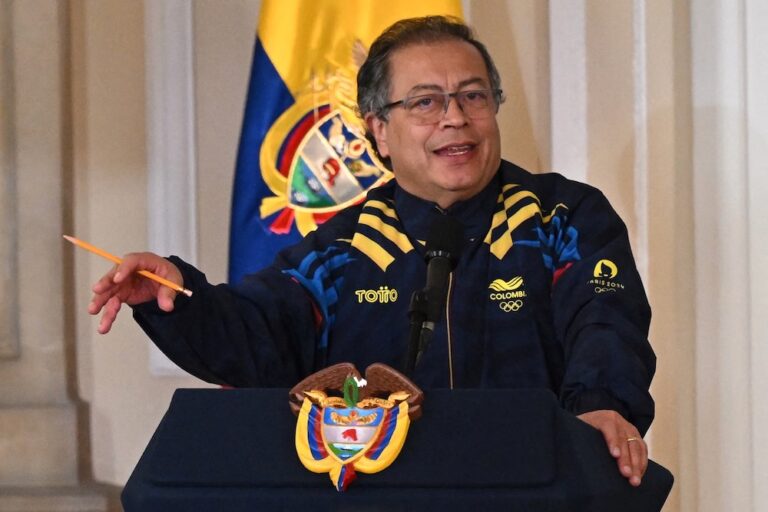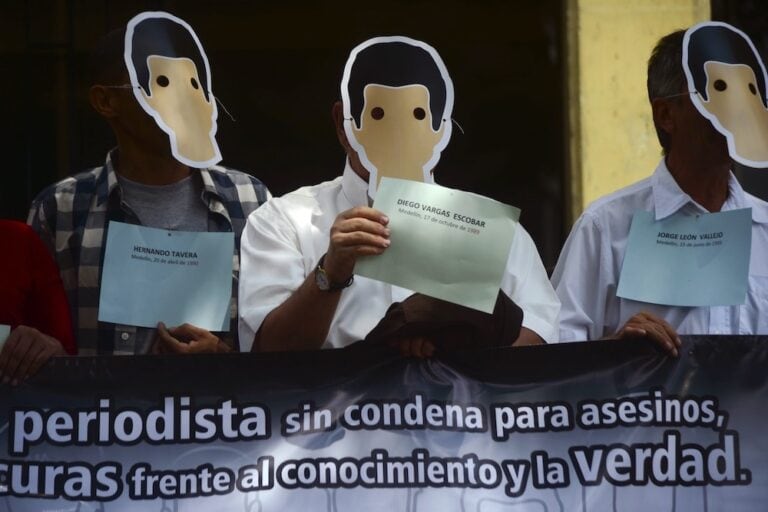(IPYS/IFEX) – On Wednesday 20 February 2002, President Andrés Pastrana announced that the army would retake the 42,000 kilometre previously demilitarised zone in the country’s south, as a result of the breakdown in peace talks with the guerilla Revolutionary Armed Forces of Colombia (Fuerzas Armadas Revolucionarias de Colombia, FARC). Following the president’s announcement, a number […]
(IPYS/IFEX) – On Wednesday 20 February 2002, President Andrés Pastrana announced that the army would retake the 42,000 kilometre previously demilitarised zone in the country’s south, as a result of the breakdown in peace talks with the guerilla Revolutionary Armed Forces of Colombia (Fuerzas Armadas Revolucionarias de Colombia, FARC). Following the president’s announcement, a number of incidents affecting the press have occurred.
According to an Agence France Presse (AFP) news agency correspondent, on the morning of Thursday 21 February the National Army prevented journalists from national and foreign media from entering the former neutral area. The incident occurred at a military checkpoint on the road between the Puerto Rico district and the San Vicente del Caguán municipality. AFP reported that General Javier Arias, commander of the XII Military Brigade, refused to grant the press authorisation to enter the area. An army spokesperson at the checkpoint reportedly stated, “the order prohibiting journalists from entering the former safe haven was given by the president.” After two hours, the journalists were informed that the checkpoint was set up for security reasons because of the risky situation in the region and they were allowed to pass.
On Saturday 23 February, Alfredo Bustillo, a correspondent for the RCN television station news programme, and his driver Carlos López were travelling through the formerly demilitarised zone when they were stopped at a FARC roadblock. Some of the national media reported on the journalist’s alleged kidnapping. However, this information was refuted by RCN representatives who told IPYS that all individuals passing by the roadblock were detained, and not just the journalists. The journalist was delayed in carrying out his work by five hours.
In a separate incident occurring on the same day at around 2:00p.m. (local time) in the El Líbano area, presidential candidate Ingrid Betancourt decided to take the road from the city of Florence to San Vicente del Caguán, after she was refused passage on the army’s helicopters. She was permitted to ride in an Administrative Department of Security (Departamento Administrativo de Seguridad, DAS) van, accompanied by four persons, including campaign cameraman Mauricio Mesa and Alan Kellert, a journalist for the French magazine “Marie Claire”. The van was adorned with decals marked “international press”, white flags and signs indicating that the presidential candidate was riding in the vehicle.
Adair Lamprea, in charge of logistics for Betancourt’s political campaign, told IPYS’ correspondent in Colombia that when the van arrived at the roadblock, a member of the guerrilla who goes by the name “El Flaco” had the transmitter radio in his hand. “El Flaco” gave the order that all flags and signs, including the ones indicating the presence of the international press, be removed from the van. In addition, the journalists were also prevented from recording events and the campaign cameraman’s equipment was taken.
After being separated from the presidential candidate and her campaign head, the journalists were forced to walk for various kilometres. At around midnight, they were abandoned and left to find their own way back to the closest town.


